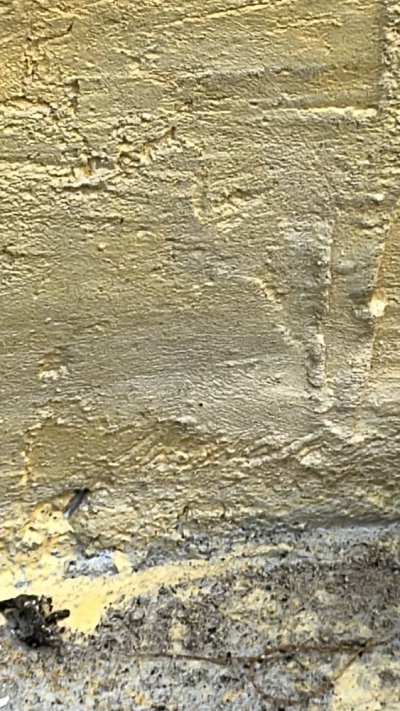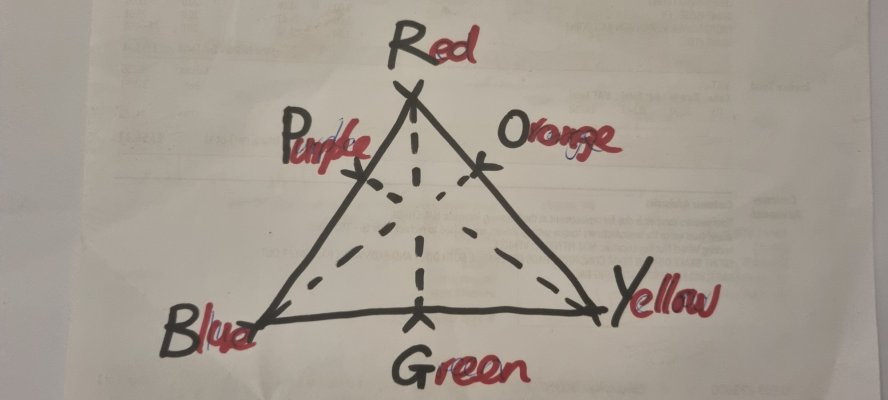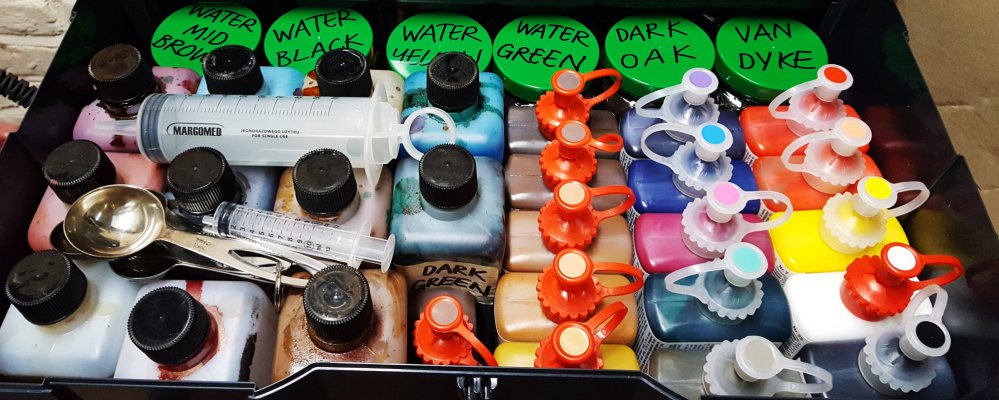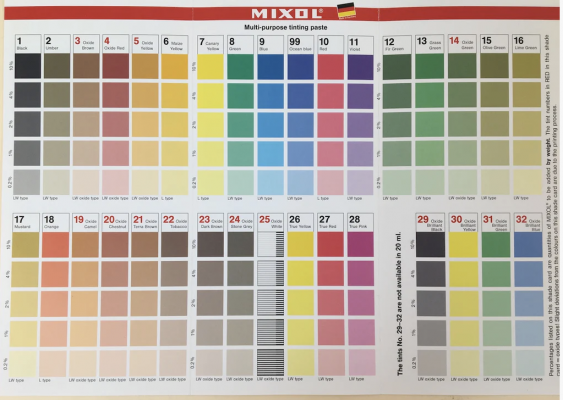You are using an out of date browser. It may not display this or other websites correctly.
You should upgrade or use an alternative browser.
You should upgrade or use an alternative browser.
Please help…. Limewash pigment mixing
- Thread starter Lulumc
- Start date
Toby Newell
Member
- Messages
- 1,635
- Location
- Surrey
I can mix any colour you want, but then I have been a colourist for over 25 years.
I would contact Ingilby, in Suffolk, arguably the best paint guys in the UK. They will sort you out.
I would contact Ingilby, in Suffolk, arguably the best paint guys in the UK. They will sort you out.
We are trying to do it ourselves to keep it on the cheap side, we have ALOT of exterior walls to paint! Could you give me an idea of what colour of pigment you would use to achieve the cream colour? This is the colour we have so far using ochre, it’s far too lemon for my liking, we have diluted down to a .5g mix
THANK YOU

THANK YOU

Sorry I didn’t tag you in my replyI can mix any colour you want, but then I have been a colourist for over 25 years.
I would contact Ingilby, in Suffolk, arguably the best paint guys in the UK. They will sort you out.
Have you tried using earthier tones like a sienna or an umber instead of ochre?
I personally think you’d struggle to get a colour like that picture using just yellow ochre, as the best you will get is a super pale yellow. Mixing an off-white / cream is usually best done with with earthier tones in my very limited experience.
I personally think you’d struggle to get a colour like that picture using just yellow ochre, as the best you will get is a super pale yellow. Mixing an off-white / cream is usually best done with with earthier tones in my very limited experience.
I had thought about a sienna pigment, maybe just a tad into the mix, and you are absolutely spot on that all we are achieving is a pale yellow!Have you tried using earthier tones like a sienna or an umber instead of ochre?
I personally think you’d struggle to get a colour like that picture using just yellow ochre, as the best you will get is a super pale yellow. Mixing an off-white / cream is usually best done with with earthier tones in my very limited experience.
Thank you for your response
Toby Newell
Member
- Messages
- 1,635
- Location
- Surrey
Ok. First. All colours are different, even batch to batch from the same company. You want to use universal tinters (stainers) not the old fashioned powders, they are gritty and don't have high obliterating power. 0.5g mix of a random ochre is meaningless.
Please don't take this the wrong way, but as a professional restorer, finisher and colourist, saving a few pounds is a fools errand, you are already saving thousands of pounds if you are doing it yourself, it's pretty easy to mix colours but then I have been doing it since I was 3 years old (painting) so half a century. Ingilby are not expensive, neither is their paint, if you cannot pay to get the right colour then, hmmmpf. People pay me thousands to stain their wood the colour no one else can get. Don't be cheap, it's false economy.
If you want to save literally a few tens of pounds, then you simply buy some pigment and experiment, pigments and limewash are cheap and go a long way.
You just buy some pigments, universal paint colourisers, I use Mixol. I would buy yellow ochre (they are German so it's called something else like "oxid") which is your basic colour and then some adjusting colours. So buy the basic additive primaries, blue, red and also black, your ochre is your yellow. (Yellow ochre is really primary yellow with a little red and black) Yo can mix any colour cream with those colours.
If you want to "splash out" then have a look at the Mixol colour range and choose a few browns, these might be easier for you to mix directly. Kamel is a good one, I use a lot of that.
then have a look at the Mixol colour range and choose a few browns, these might be easier for you to mix directly. Kamel is a good one, I use a lot of that.
Your basic colour is the white wash itself, then you add your yellow ochre (oxide) paint that on and see where you are, add a little at a time. If it's too bright dilute it. Adding black will make it duller and cooler, adding red or orange or a warmer brown (Kamel) will make it warmer. Adding blue will make it slightly green, adding purple (red and blue) will knock down the yellow saturation.
Add a little at a time. Inversely proportional to learning to cut hair, you can always take a little more off but not add any more on, well, you can always add a little more pigment but you can't remove it, or you end up with a bathtub full of colour.
In your photo it looks cooler, so more dilute (more white) and add a little blue with a few drops of black. Although to be fair it's a terrible picture with very bad white balance, in real life that cream would be a lot warmer, I am just going on what you have sent.
I won't go into too much colour science, but your real additive, real world pigment primaries are Cyan, Magenta and Yellow, from which you make the secondaries Blue, Red and Green. You can buy the primaries but it will be harder if you don't know what you are doing, so stick to the secondaries.
See the colour triangle below.
Each colour has it's opposite. If you want to reduce the effect of one colour (hue) just add a little of the opposite colour. For example, if your paint is too yellow, add a little purple, if it is too orange, add a little blue, if it is too red, add a little green.
It's worth remembering pigmented colours (reflected colours) are SUBTRACTIVE, ie they work by absorbing light and only reflecting the colour you see, so they will make your paint darker (theoretically black, but in reality more of a brown grey)
The trick is to get the colour right as much as possible from the start, then make very minor adjustments, that way it doesn't get too dark or 'turgid'.
Personally it's the favourite part of my job and I am known for being quite good at it. There is obviously a knack, I can mix colours in my head, but then I have been doing it for decades, it is fun! You won't actually save any money becuase the pigments will be just as much as Ingilby lixing it for you, but then you will have been learning a skill and that is very satisfying.


Please don't take this the wrong way, but as a professional restorer, finisher and colourist, saving a few pounds is a fools errand, you are already saving thousands of pounds if you are doing it yourself, it's pretty easy to mix colours but then I have been doing it since I was 3 years old (painting) so half a century. Ingilby are not expensive, neither is their paint, if you cannot pay to get the right colour then, hmmmpf. People pay me thousands to stain their wood the colour no one else can get. Don't be cheap, it's false economy.
If you want to save literally a few tens of pounds, then you simply buy some pigment and experiment, pigments and limewash are cheap and go a long way.
You just buy some pigments, universal paint colourisers, I use Mixol. I would buy yellow ochre (they are German so it's called something else like "oxid") which is your basic colour and then some adjusting colours. So buy the basic additive primaries, blue, red and also black, your ochre is your yellow. (Yellow ochre is really primary yellow with a little red and black) Yo can mix any colour cream with those colours.
If you want to "splash out"
Your basic colour is the white wash itself, then you add your yellow ochre (oxide) paint that on and see where you are, add a little at a time. If it's too bright dilute it. Adding black will make it duller and cooler, adding red or orange or a warmer brown (Kamel) will make it warmer. Adding blue will make it slightly green, adding purple (red and blue) will knock down the yellow saturation.
Add a little at a time. Inversely proportional to learning to cut hair, you can always take a little more off but not add any more on, well, you can always add a little more pigment but you can't remove it, or you end up with a bathtub full of colour.
In your photo it looks cooler, so more dilute (more white) and add a little blue with a few drops of black. Although to be fair it's a terrible picture with very bad white balance, in real life that cream would be a lot warmer, I am just going on what you have sent.
I won't go into too much colour science, but your real additive, real world pigment primaries are Cyan, Magenta and Yellow, from which you make the secondaries Blue, Red and Green. You can buy the primaries but it will be harder if you don't know what you are doing, so stick to the secondaries.
See the colour triangle below.
Each colour has it's opposite. If you want to reduce the effect of one colour (hue) just add a little of the opposite colour. For example, if your paint is too yellow, add a little purple, if it is too orange, add a little blue, if it is too red, add a little green.
It's worth remembering pigmented colours (reflected colours) are SUBTRACTIVE, ie they work by absorbing light and only reflecting the colour you see, so they will make your paint darker (theoretically black, but in reality more of a brown grey)
The trick is to get the colour right as much as possible from the start, then make very minor adjustments, that way it doesn't get too dark or 'turgid'.
Personally it's the favourite part of my job and I am known for being quite good at it. There is obviously a knack, I can mix colours in my head, but then I have been doing it for decades, it is fun! You won't actually save any money becuase the pigments will be just as much as Ingilby lixing it for you, but then you will have been learning a skill and that is very satisfying.


Thank you so much for the detailed response, and it is really really helpful, I am going to call ingilby in the morning. I am very much up for the experiment of mixing and achieving my own unique colour! But I also understand that maybe just buying straight from ingilby will save a lot of time and faffing about.Ok. First. All colours are different, even batch to batch from the same company. You want to use universal tinters (stainers) not the old fashioned powders, they are gritty and don't have high obliterating power. 0.5g mix of a random ochre is meaningless.
Please don't take this the wrong way, but as a professional restorer, finisher and colourist, saving a few pounds is a fools errand, you are already saving thousands of pounds if you are doing it yourself, it's pretty easy to mix colours but then I have been doing it since I was 3 years old (painting) so half a century. Ingilby are not expensive, neither is their paint, if you cannot pay to get the right colour then, hmmmpf. People pay me thousands to stain their wood the colour no one else can get. Don't be cheap, it's false economy.
If you want to save literally a few tens of pounds, then you simply buy some pigment and experiment, pigments and limewash are cheap and go a long way.
You just buy some pigments, universal paint colourisers, I use Mixol. I would buy yellow ochre (they are German so it's called something else like "oxid") which is your basic colour and then some adjusting colours. So buy the basic additive primaries, blue, red and also black, your ochre is your yellow. (Yellow ochre is really primary yellow with a little red and black) Yo can mix any colour cream with those colours.
If you want to "splash out"then have a look at the Mixol colour range and choose a few browns, these might be easier for you to mix directly. Kamel is a good one, I use a lot of that.
Your basic colour is the white wash itself, then you add your yellow ochre (oxide) paint that on and see where you are, add a little at a time. If it's too bright dilute it. Adding black will make it duller and cooler, adding red or orange or a warmer brown (Kamel) will make it warmer. Adding blue will make it slightly green, adding purple (red and blue) will knock down the yellow saturation.
Add a little at a time. Inversely proportional to learning to cut hair, you can always take a little more off but not add any more on, well, you can always add a little more pigment but you can't remove it, or you end up with a bathtub full of colour.
In your photo it looks cooler, so more dilute (more white) and add a little blue with a few drops of black. Although to be fair it's a terrible picture with very bad white balance, in real life that cream would be a lot warmer, I am just going on what you have sent.
I won't go into too much colour science, but your real additive, real world pigment primaries are Cyan, Magenta and Yellow, from which you make the secondaries Blue, Red and Green. You can buy the primaries but it will be harder if you don't know what you are doing, so stick to the secondaries.
See the colour triangle below.
Each colour has it's opposite. If you want to reduce the effect of one colour (hue) just add a little of the opposite colour. For example, if your paint is too yellow, add a little purple, if it is too orange, add a little blue, if it is too red, add a little green.
It's worth remembering pigmented colours (reflected colours) are SUBTRACTIVE, ie they work by absorbing light and only reflecting the colour you see, so they will make your paint darker (theoretically black, but in reality more of a brown grey)
The trick is to get the colour right as much as possible from the start, then make very minor adjustments, that way it doesn't get too dark or 'turgid'.
Personally it's the favourite part of my job and I am known for being quite good at it. There is obviously a knack, I can mix colours in my head, but then I have been doing it for decades, it is fun! You won't actually save any money becuase the pigments will be just as much as Ingilby lixing it for you, but then you will have been learning a skill and that is very satisfying.
View attachment 11335View attachment 11336
I really do appreciate you taking the time to respond.
Thank you
Lucy
Toby Newell
Member
- Messages
- 1,635
- Location
- Surrey
Camel is probably closest to your raw Sienna, I would at least get that and an ochre, black, red and blue.
FYI I still have kilos of traditional earth pigments but we don't use them anymore since the universal tinters came out, a bit sad in a way, but the new ones are much better, your car, Dulux paint, F&B etc, they are made using these exact tinters.
Best of luck and have fun, or simply ask a professional to mix it for you. Either or.

FYI I still have kilos of traditional earth pigments but we don't use them anymore since the universal tinters came out, a bit sad in a way, but the new ones are much better, your car, Dulux paint, F&B etc, they are made using these exact tinters.
Best of luck and have fun, or simply ask a professional to mix it for you. Either or.

Toby Newell
Member
- Messages
- 1,635
- Location
- Surrey
lol. You are welcome.Thank you so much for the detailed response, and it is really really helpful, I am going to call ingilby in the morning. I am very much up for the experiment of mixing and achieving my own unique colour! But I also understand that maybe just buying straight from ingilby will save a lot of time and faffing about.
I really do appreciate you taking the time to respond.
Thank you
Lucy
It can take years to master and I think there is a genetic component, my Mother, Grandfather and Uncle were all great artists and I have a little of that.
It will certainly be a lot easier getting someone else to do it, but less fun!
Toby Newell
Member
- Messages
- 1,635
- Location
- Surrey
Shame you are not closer, I have never met the Ingilby's but have it on good authority they are the best, some of the most famous oldest houses in the UK are painted using their paints including the historical society in Lavenham, the guild hall and the crooked house, as featured in Harry Potter. I don't know them from Adam only what I have heard and seen (clients using their paints on my jobs) as a fellow colourist, albeit on wood (just the same, only technical differences, my Grandfather was also a master spray painter, tanks, Rolls Royces, Chairs) I am pretty sure if they aren't busy they are the type of people to go through how you can mix paints yourself or show you the process.
Despite the tens of thousands of hours and the same in cost of machinery it's still the colouring that most clients are impressed with, it's quite rare to find a good colourist so don't feel bad if you cannot do it, it's kind of intuitive, either you get it quite quickly or you never will.
Even if you get the paint made up from Ingilby, ask them what colours and tinters they used and maybe experiment yourself anyway, you never know, you might be a natural!
(FYI The gene that codes for cone receptors is on the X chromosome, hence women have a chance to replace a mutated gene and thus have better colour acuity and lower incidence of colour blindness. Concomitantly, women also have the chance to gain a positively mutated gene and thus code for another set of (four instead of three, red, near red, blue and green vs normal red, green, blue) cone receptor cells. So, some women, unbeknownst to them are super colour seers at about the same rate of colour blindness in men, which is why I always ask the woman to check the colour for final approval! )
)
Despite the tens of thousands of hours and the same in cost of machinery it's still the colouring that most clients are impressed with, it's quite rare to find a good colourist so don't feel bad if you cannot do it, it's kind of intuitive, either you get it quite quickly or you never will.
Even if you get the paint made up from Ingilby, ask them what colours and tinters they used and maybe experiment yourself anyway, you never know, you might be a natural!
(FYI The gene that codes for cone receptors is on the X chromosome, hence women have a chance to replace a mutated gene and thus have better colour acuity and lower incidence of colour blindness. Concomitantly, women also have the chance to gain a positively mutated gene and thus code for another set of (four instead of three, red, near red, blue and green vs normal red, green, blue) cone receptor cells. So, some women, unbeknownst to them are super colour seers at about the same rate of colour blindness in men, which is why I always ask the woman to check the colour for final approval!
You definitely know your stuff, would of been very handy to have been closer! You have got me excited about trying to make my own colour, however not sure if I am maybe been a bit ambitious! I can certainly try and if all else fails I will just buy the paint!Shame you are not closer, I have never met the Ingilby's but have it on good authority they are the best, some of the most famous oldest houses in the UK are painted using their paints including the historical society in Lavenham, the guild hall and the crooked house, as featured in Harry Potter. I don't know them from Adam only what I have heard and seen (clients using their paints on my jobs) as a fellow colourist, albeit on wood (just the same, only technical differences, my Grandfather was also a master spray painter, tanks, Rolls Royces, Chairs) I am pretty sure if they aren't busy they are the type of people to go through how you can mix paints yourself or show you the process.
Despite the tens of thousands of hours and the same in cost of machinery it's still the colouring that most clients are impressed with, it's quite rare to find a good colourist so don't feel bad if you cannot do it, it's kind of intuitive, either you get it quite quickly or you never will.
Even if you get the paint made up from Ingilby, ask them what colours and tinters they used and maybe experiment yourself anyway, you never know, you might be a natural!
(FYI The gene that codes for cone receptors is on the X chromosome, hence women have a chance to replace a mutated gene and thus have better colour acuity and lower incidence of colour blindness. Concomitantly, women also have the chance to gain a positively mutated gene and thus code for another set of (four instead of three, red, near red, blue and green vs normal red, green, blue) cone receptor cells. So, some women, unbeknownst to them are super colour seers at about the same rate of colour blindness in men, which is why I always ask the woman to check the colour for final approval!)
Yes I was hoping they could at least point me in the right direction for at least suggested pigments and % that will help me achieve a colour close to what I like!
I will report back to you and let you know how I get on! So kind of you helping me I definitely feel like am I on the right track now
Stevers
Member
- Messages
- 971
- Location
- Mendip Hills
Do a small test mix first to make sure the pigments selected will produce the colour you want, painting test patches to check under different light conditions.
When I could no longer get the Roncraft Universal Stainers that I previously used, I changed over to Inchem's 'Pigment MIX'.
http://inchem.pl/en/products/pigment-mix
I buy them off the net as required at around £7 a pop. I'm generally mixing creams so start with #3 Sunshine Yellow and add brown then primaries to adjust. One thing I have learned is that you can't tell by looking in the tin, you have to paint a patch and wait for it to dry before you know where you are.
When I could no longer get the Roncraft Universal Stainers that I previously used, I changed over to Inchem's 'Pigment MIX'.
http://inchem.pl/en/products/pigment-mix
I buy them off the net as required at around £7 a pop. I'm generally mixing creams so start with #3 Sunshine Yellow and add brown then primaries to adjust. One thing I have learned is that you can't tell by looking in the tin, you have to paint a patch and wait for it to dry before you know where you are.

